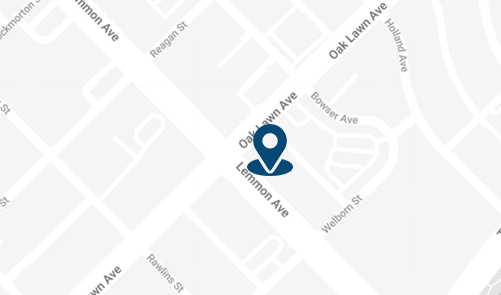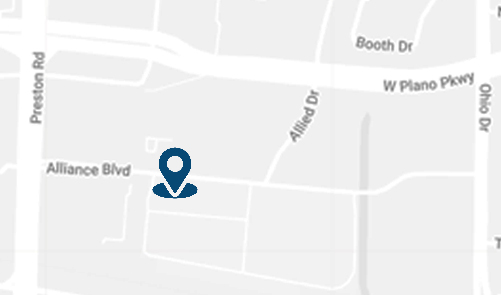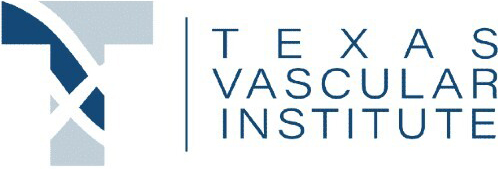By: Dr. Dev Batra | 01.29.23
Varicose veins are common, affecting about three in 10 adults. Generally, more of a cosmetic than a medical issue, varicose veins — bulging red or purple lines usually found on the legs — can still be painful and cause skin rashes. These are just a few of the reasons you might want to have them removed. One of the most common ways to do that is through sclerotherapy.
At Texas Vascular Institute, interventional radiologist Dr. Dev Batra uses sclerotherapy for venous disease treatment, as well as varicose vein removal. If you’re considering getting your varicose veins treated, here’s what you need to know.
Chronic venous insufficiency and varicose veins
Your veins return deoxygenated blood from the body’s tissues back to the heart and lungs. To accomplish this, blood has to flow against the pull of gravity. Veins, therefore, have a series of one-way valves that snap shut once the blood passes through, preventing backward movement.
Weak vein walls, though, can damage the valves. That allows blood flow to become sluggish and the blood to pool around the valves — a condition referred to as chronic venous insufficiency. The increased pressure against the vein walls causes the veins to become engorged, resulting in reddish or purplish, ropy, and highly visible swelling — varicose veins.

While any vein in the body can become varicose, they’re most often found in the legs and feet, especially in the calves. That’s because walking and standing — and even your body’s weight — puts additional pressure on the veins in the lower body.
Symptoms of varicose veins include:
- Swollen ankles and feet
- Burning or throbbing feeling in your legs
- Muscle cramps, especially at night
- Aching, heavy, uncomfortable legs
- Thin, dry, and itchy skin over the affected vein
The symptoms usually worsen during warm weather or when you’ve been standing for long periods. Walking or elevating your legs may help.
Traditional sclerotherapy
Sclerotherapy involves injecting the varicose vein with a solution that irritates its lining, causing it to collapse. Blood is then rerouted to healthy veins. The procedure doesn’t require anesthesia or any special preparation. You may feel a tingling or burning sensation as the solution is injected, or you may feel nothing at all.
Following the injection, our providers massage the area to prevent blood from flowing back into the vein, and you’ll probably need to wear compression stockings for a bit. You’ll also need to stay active to prevent blood clots from forming. The most common adverse effects are bruising, redness, and pain near the injection site.
Most people need follow-up treatment to collapse the vein entirely. If you have multiple varicose veins, multiple treatments are usually required.
Studies suggest that sclerotherapy is effective in 60-80% of cases.

Ultrasound-guided sclerotherapy
Here at Texas Vascular Institute, Dr. Batra uses ultrasound-guided sclerotherapy — a state-of-the-art procedure to treat varicose veins. He injects a sclerosing agent into your vein carried in a foam suspension, using ultrasound guidance.
Since most sclerosing agents are liquids, it can be difficult to achieve even distribution within the veins. But with ultrasound-guided sclerotherapy, Dr. Batra injects a gas into the sclerosing agent, then injects the foam-sclerosant blend into your vein.
The gas functions as a marker, which can be viewed with ultrasound imaging, allowing our team to expertly target a specific area. And the foam not only allows for even distribution, but it also rises against gravity, producing optimal results.
The treatment takes only about 30-60 minutes. He’ll give you discharge instructions before you leave.

Is ultrasound-guided sclerotherapy right for me?
Ultrasound-guided sclerotherapy may be a good choice if you have chronic venous disease or varicose veins. We frequently combine this procedure with other treatments to enhance ulcer healing.
If you’re still not sure about the appropriate treatment, we also offer an innovative treatment, Varithena, that may be right for you as well.
If, however, you have an elevated risk for clotting or arterial vessel disease, you might be better suited to a different kind of treatment. That’s something you can discuss with Dr. Batra at your initial consultation.
If you’re tired of looking at the varicose veins snaking across your legs, or if they’re causing you discomfort, visit Texas Vascular Institute to evaluate your options. You can call our office at 972-646-8346, or you can schedule your consultation online. Healthier veins and legs are just a short treatment away.
Read more blogs
Why Are My Veins Blue?
Wondering why your veins look blue under your skin? Learn the science behind vein color, how light affects what you see, and what it means for your health.
10 Warning Signs Of Poor Circulation And How To Fix It
Have you ever noticed your feet always feel cold, or your legs cramp up when walking? These could be warning signs of poor circulation, a condition that can impact your daily life and overall health.
Leg Pain Keeping You Up at Night?
Are restless, aching legs keeping you from a good night’s sleep? Nighttime leg pain can interfere with your rest, affecting your health, mood, and ability to take on daily activities. While there can be various causes, nighttime leg pain - especially when accompanied by feelings of heaviness, throbbing, or itchiness - could point to a vein issue.
WHAT OUR PATIENTS
have to say
Texas Vascular Institute always appreciates feedback from our valued patients. To date, we’re thrilled to have collected 378 reviews with an average rating of 5 out of 5 stars. Please read what others are saying about Texas Vascular Institute below, and as always, we would love to collect your feedback.
Leave a Review
Amazing Practice
I'm very particular with my Healthcare and tend to be cautious with referrals to specialists. This office is amazing from the first point of contact. Their staff are friendly, professional and highly knowledgeable. Then the Dr is just as amazing as his staff, absolutely brilliant. Office manager Jessica has this office running like a well oiled machine and does so with a smile, an air of confidence, kindness and professionalism. Love this practice!!
- Richard G.

Beyond Thankful
Dr Batra and his staff are amazing! We are so grateful to have found him. Everyone is so kind and so caring and Dr Batra explains everything so well and does procedures with excellence. Beyond thankful to be under their care!!!
- Bitsy P.

Gold Standard
This is a gold standard for how a medical practice should be run. I was promptly seen at my scheduled time, my ultrasound was thorough and I received plenty of attention and care from the staff and Dr.Batra.
- Weronika L.
INSURANCE
We accept most major insurance plans. Please contact the medical office for all insurance related questions.









8330 Meadow Rd #100
Dallas, TX 75231
For Appointments: 972-798-4710
General Inquiries: 972-646-8346

809 West Harwood Rd, Suite 101,
Hurst, TX 76054
For Appointments: 972-798-4710
General Inquiries: 972-646-8346

4716 Alliance Blvd Suite #180,
Plano, TX 75093
For Appointments: 972-798-4710
General Inquiries: 972-646-8346

